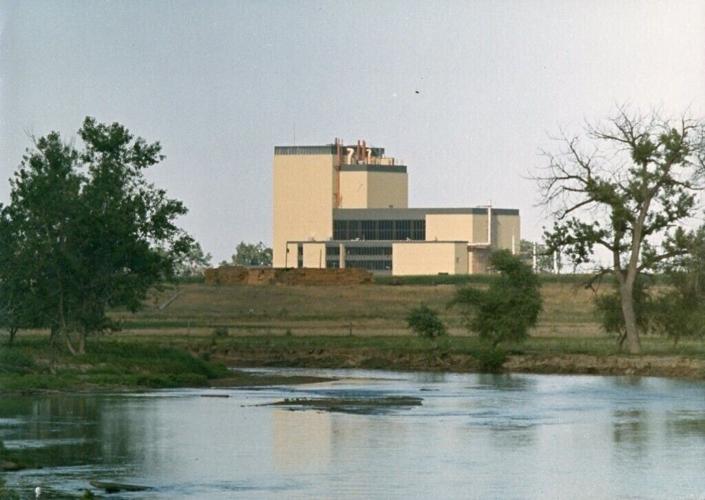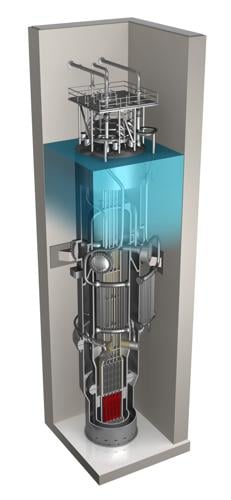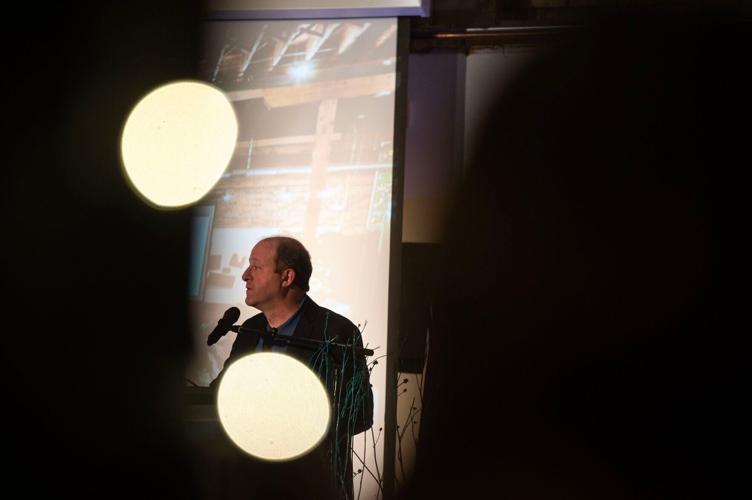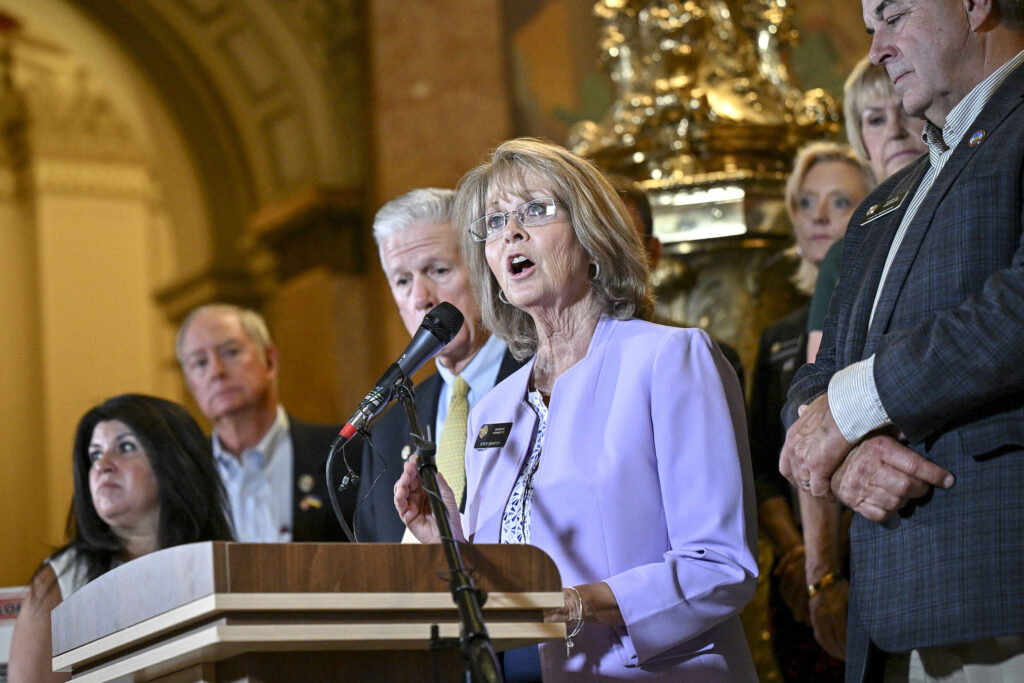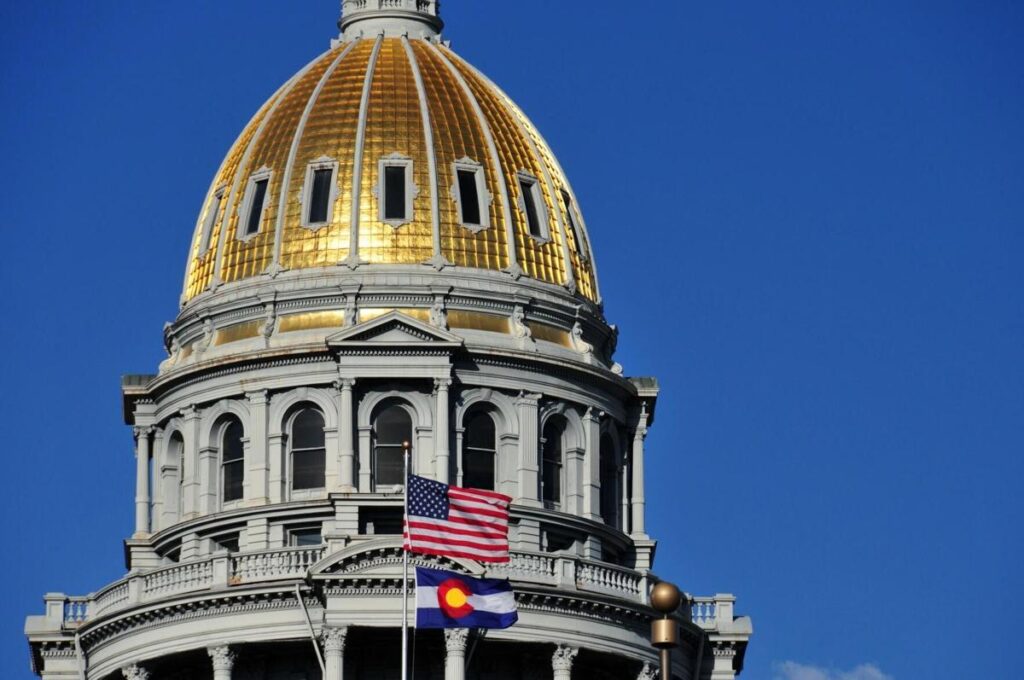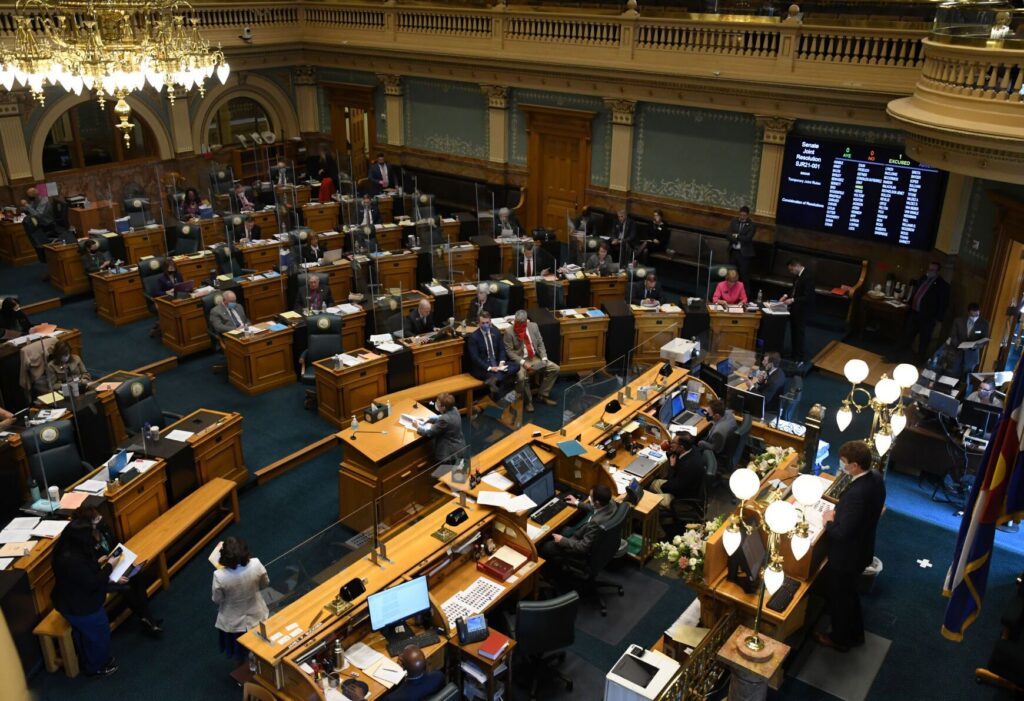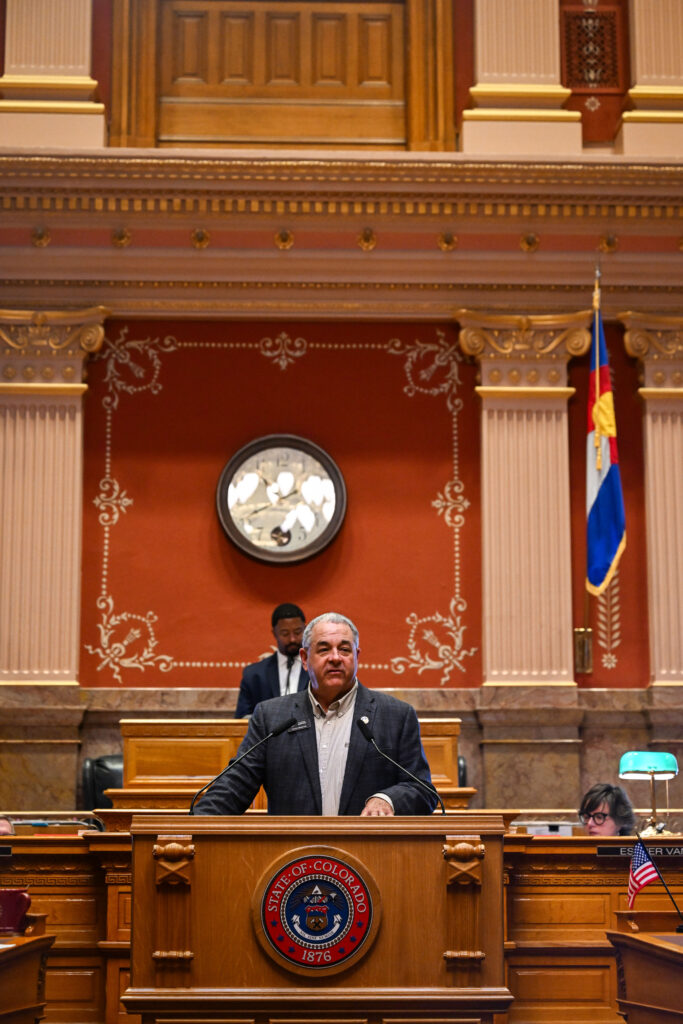Signaling acceptance, Colorado governor adds nuclear to ‘clean’ energy sources
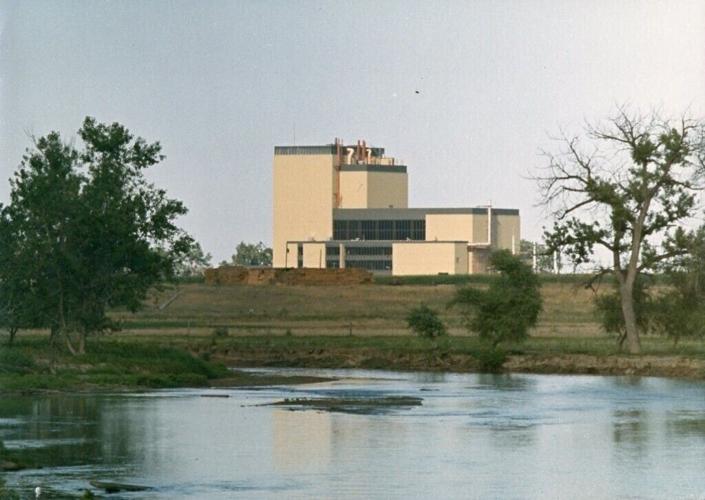
Denver Gazette file photo
Nuclear for power production has now been added to the list of “clean” sources, alongside wind, solar and geothermal, after Gov. Jared Polis on Tuesday signed a proposal that signaled Colorado policymakers’ changing attitude toward this energy source.
“The governor was excited to sign this bipartisan bill yesterday that passed with significant votes in both chambers to continue on our progress toward all solutions to meet our clean energy goals,” said a spokesperson for Polis. “To be clear, this bill does not move forward any particular nuclear energy project in Colorado, nor have any been proposed as part of resource planning by any utility.”
Advocates of nuclear power said the three-year effort by legislators and nuclear power proponents to pass what ultimately became House Bill 25-1040 would put Colorado on the path to meeting the state’s goal of 100% “carbon free” energy by 2040.
Critics, on the other hand, argued that including nuclear power under the legal definition of clean energy would divert money away from other “renewable” sources. They called nuclear energy a “false solution” and a “risky, expensive, and unsustainable technology.”
Since Xcel Energy shut down the state’s first and only nuclear power reactor in 1989, there has been little interest shown in building such power plants here — until now.
According to experts, putting nuclear power on the clean energy list opens up funding and permitting options that were generally foreclosed in the past.
This is not to say that any power providers have plans to build a nuclear reactor, but Xcel Energy Colorado’s chief is at least open-minded about it.
In an October 2022 interview, Xcel Energy Colorado CEO Robert Kenney said, “I think it’s a technology that we, as a nation, have to look at.”
Kenney was specifically referring to small modular reactors, which have the benefit of, among other things, mobility and cost.
“It’s a technology I think bears looking into. I would have to really understand how it fits in specifically into our resource mix here in Colorado — what the political climate is for it,” he said.
With the development of new nuclear reactor technology and the advent of increasing demand for electricity that federal agencies say could double by 2050, a consensus appears to be building nationwide over the necessity for nuclear energy as a means of achieving carbon reduction goals, especially with the advent of power-hungry data centers proposed by companies like Amazon and Google.
If the state is “serious” about reducing carbon emissions, “we need to look at all viable alternatives,” Polis previously told The Denver Gazette.
‘Central to meeting … a clean energy future’
Critics have raised questions of cost. They pointed to projects like the Alvin W. Vogtle Electric Generating Plant in Georgia. Two reactors began operation in 1987 and 1989. Two additional reactors began construction in 2013 but didn’t begin operations until 2023 and 2024. The project’s final cost more than doubled the original projections, going from about $14 billion to more than $30 billion.
The distinction, nuclear power supporters said, is that Vogtle 3 and 4 faced obstacles, including cost overruns, supply chain issues, regulatory compliance, and reactor manufacturer Westinghouse’s bankruptcy in 2017. They insisted that new designs, like NuScale’s small modular reactor, cost far less. They added that increases in costs for “renewable” sources make nuclear energy competitive.
“With this new law, and if nuclear energy becomes sufficiently cost-competitive, it could potentially become part of Colorado’s clean energy future,” said Polis’ spokesperson. “However, it must be conducted safely, without harming communities, depleting other natural resources, or replacing other clean energy sources.”
Xcel Energy said it is intent on providing reliable, cost-effective power to its customers, and that nuclear power has been a part of it’s company’s portfolio for many years.
“We commend the governor for signing this important legislation, and congratulate the proponents of the Nuclear Energy as a Clean Energy Resource bill (HB25-1040) who have worked for many years to get this important legislation across the finish line,” said Xcel spokesperson Michelle Aguayo in an email statement. “As we have said previously, Xcel Energy is a nuclear leader operating two nuclear facilities in Minnesota. Our nuclear power plants help us avoid producing hundreds of millions of tons of greenhouse gases and are central to meeting our goal for a clean energy future for the Upper Midwest.”
Colorado Springs Utilities CEO Travas Deal told The Denver Gazette in March that the actual costs of wind, solar and batteries are far higher than first believed and that the utility is scrambling for ways to meet statutory requirements for decarbonization.
“There’s a lot of challenges right now for us to meet the current 80% mandates without extreme price increases for our customers,” Deal said. “We’ve had 200-plus RFPs recently for solar, and they’re upward of at least two to three times — probably more — than we anticipated.”
No technology currently allows 100% of all power to be renewable, Deal added. The current alternatives seem to be natural gas and geothermal for dealing with load variability from renewables.
The Colorado Energy Office released a report by Ascend Analytics in October about potential pathways to deep “decarbonization” in the electric sector in Colorado by 2040.
“The analysis … finds that relying on wind, solar, and battery storage alone results in the most expensive path to decarbonization, while a pathway relying on advanced nuclear generation is the second most expensive scenario,” said the report.
The report said the cost of wind, solar and batteries alone is about 1% more — $61 billion — than the projected cost for the nuclear power scenario at $60.8 billion.
‘Don’t call it clean’
Not everyone is pleased with the new law.
Some argued it would take money away from wind, solar and geothermal sources and pointed to the issue of expended fuel rods from nuclear plants and other forms of radioactive waste.
“Since nuclear energy projects are not prohibited under current Colorado law, I expect the net effects of the passage of HB-1040 to be mostly focused on increased funding opportunities for nuclear projects in Colorado and a corresponding reduction in available incentives for other clean energy technologies, such as wind and solar,” said Joel Johnston, a partner at environmental law firm Hall Estill in a statement. “The fact remains that long-term radioactive waste management is a huge ongoing issue for the nuclear power industry, which this bill does nothing to address.”
“It’s unfortunate to see the Colorado Legislature and Governor Polis bastardize clean energy like this,” Jeremy Nichols, senior advocate for the Environmental Health Program at the Center for Biological Diversity, said in an email. “If communities want nuclear, fine, but don’t call it clean and don’t give it the same incentivizes and recognition that we’re working hard to give solar, wind, and storage as we transition away from dirty and costly fossil fuels.”
To legislate that nuclear is “clean energy is no different than legislating that raw sewage is clean water or smog is clean air,” Nichols said. “It’s abhorrent.”
A 2023 report from the U.S. Department of Energy analyzing suitable coal power plant sites said conversion to run on advanced small reactors can save 28% to 35% of construction costs compared with building a new nuclear plant and offer a 9% to 28% reduction in the cost of energy.
The U.S. has 94 nuclear power reactors at 54 plants in 28 states that provide 18.5% of the nation’s electricity and nearly 50% of its carbon-free energy.
According to the DOE report, by replacing coal with nuclear, regional economic activity could increase by as much as $275 million and add 650 new, permanent jobs distributed across the plant. The supply chain supporting the plant and the community surrounding the plant, including an estimated contribution to local schools, could amount to more than $7 million annually.
Repurposing coal plants to use nuclear energy is also much faster than building new nuclear plants, according to the report. Completing the conversion can take five-to-six years, the report added.
Pamela Gorman, director of nuclear strategy and policy for Xcel Energy, said, “I think the big question is, with advanced nuclear, where do the costs come down?”
One obstacle to the commercial development of nuclear power in Colorado was that it was not included in the state’s list of “clean” power sources defined in state statutes.
This, said Deal, discourages investment and can affect government grants and permitting at both the state and federal levels.
Colorado Politics Must-Reads:


